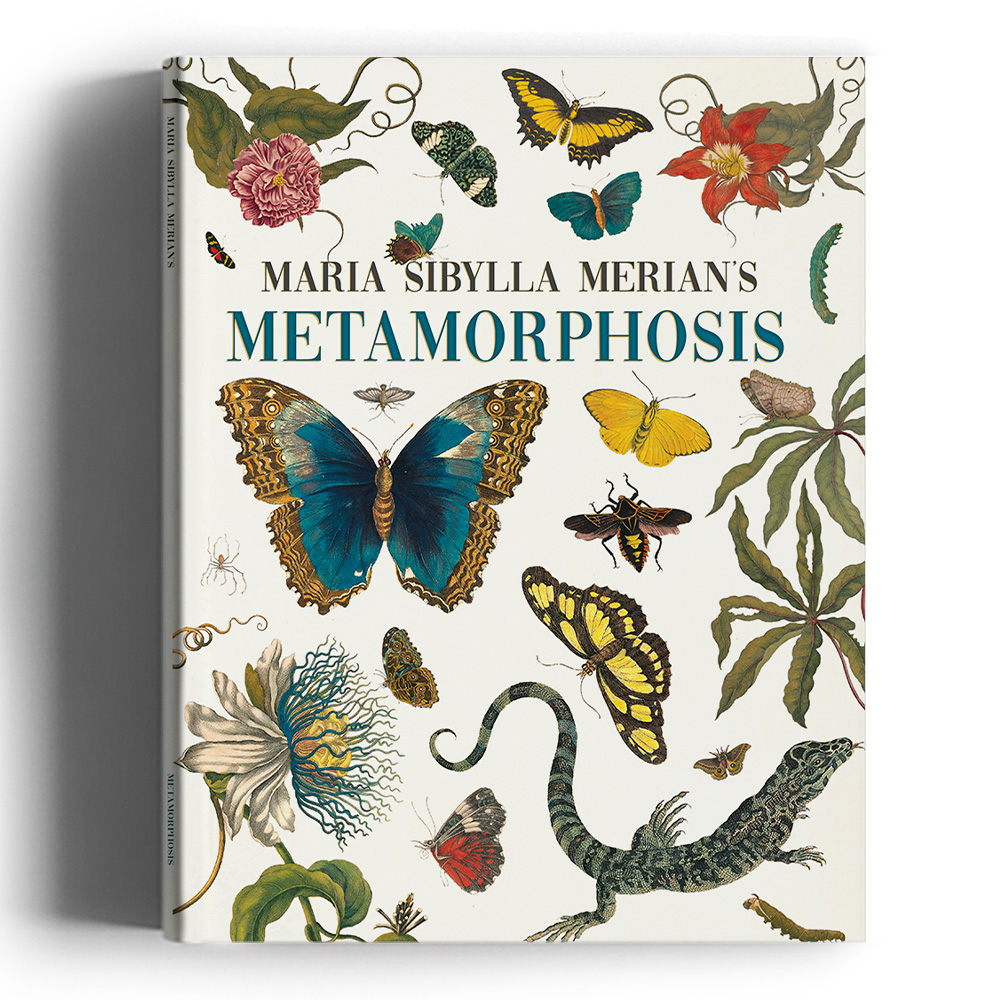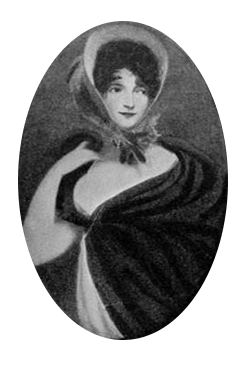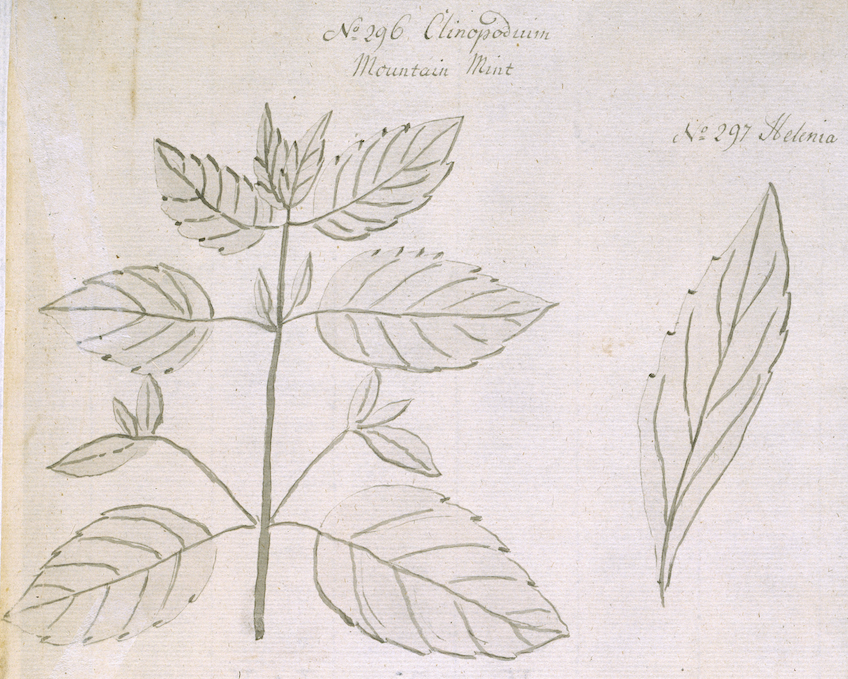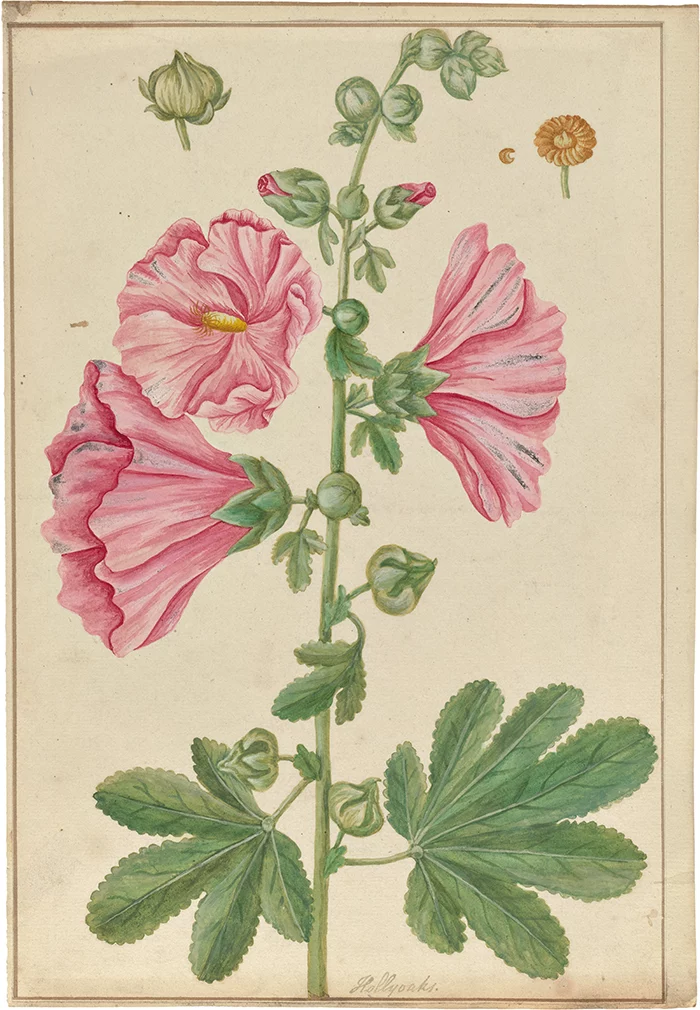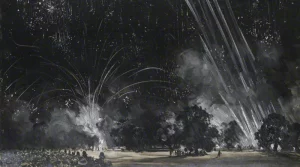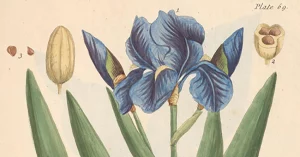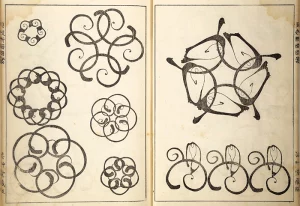The Role of Women in Botanical illustration
Throughout history, women have played a vital yet often overlooked role in documenting the botanical world. Women in Botany celebrates a group of remarkable women whose legacies in botany and illustration changed the faces of both fields.
Working at the intersection of art and science, these trailblazing women artist-botanists not only captured the beauty of plants but also advanced scientific understanding through their careful observation and innovative techniques. From Maria Sibylla Merian’s groundbreaking studies of insects and flora to Anna Atkins’ pioneering cyanotypes, the work of these female botanists reveals how creativity and inquiry have blossomed together throughout history.
history's greatest women botanists
A German-born artist-naturalist, Maria Sibylla Merian revolutionised entomology and botanical art. Best known for her Metamorphosis Insectorum Surinamensium (1705), she documented the life cycles of insects alongside the plants that sustained them, blending scientific observation with exquisite artistry. At a time when few women engaged in scientific study, Merian financed and undertook a research expedition to Suriname, producing luminous watercolours of tropical flora and fauna. Her meticulous work challenged prevailing ideas about spontaneous generation and laid the foundations for modern entomology. Today, she is celebrated as one of the earliest women in botany, pioneering in her work in entomology and natural history.
Discover the trailblazing work of artist-naturalist Maria Sibylla Merian in this beautifully illustrated volume on the life cycle of butterflies and moths.
Jane Colden (1724–1766) is now recognised as the first woman botanist in America. Her meticulous documentation of native North American flora stands as the earliest known record of its kind produced by a woman, as well as one of the earliest to employ Carl Linnaeus’s new system of classification. Her beautiful, yet unpublished manuscript, The Flora of New York (produced between 1753 and 1758), remains a pioneering contribution to eighteenth-century botany.
Born in 1724 in colonial New York, Colden spent much of her life in the Hudson Valley on her family’s vast estate, Coldengham. Under the guidance of her father, Cadwallader Colden (1688–1776), she developed a sustained interest in natural history and the emerging Linnaean framework. Over the following decade, she compiled a detailed catalogue of more than 400 plant species found on her family’s land, producing a volume of work that would later be recognised as a foundational record of the flora of New York.
Her work combined acute observational skill with a scientific understanding of botanical structure and function. Furthering her scientific enquiry, she conducted experiments on plant reproduction and cross-pollination while corresponding with European botanists to exchange specimens and gain access to non-native species in her corner of North America. Her descriptions integrated Linnaean taxonomy with careful notes on each plant’s morphology, habitat, and practical uses—many derived from local Indigenous knowledge—and were accompanied by her own finely detailed illustrations and nature prints.
In capturing the essence of eighteenth-century botany through the unexplored flora of colonial New York, Jane Colden emerged as both America’s first woman botanist and the earliest interpreter of the Linnaean system on its soil.
Elizabeth Blackwell (1699–1758) was a pioneering British botanist and illustrator whose Curious Herbal (1737–1739) represents a landmark in eighteenth-century botanical science and visual culture.
Trained as an artist in Aberdeen and evidently educated in aspects of medicine and herbal pharmacology, Blackwell combined artistic precision with scientific understanding to produce one of the most authoritative herbals of her time. She worked from living specimens cultivated at the Chelsea Physic Garden, London, having taken convenient lodgings nearby, where she drew, engraved, and hand-coloured more than 500 plates herself—an exceptional level of authorship in early modern scientific publishing, and almost unprecedented for a woman of her period.
Not to be confused with her later namesake, the pioneering physician Elizabeth Blackwell (1821–1910), our Elizabeth Blackwell (1699–1758) was also knowledgeable in areas of medicine and pharmacology. Although it’s recorded that she first learnt midwifery to raise funds after her husband was fined for practising medicine without a proper license, Blackwell’s medical and botanical knowledge left her in good standing when compiling her herbal.
This complex background situates her instead as a learned and resourceful figure operating at the intersection of art and science, whose intellectual and practical expertise informed one of the most important botanical works of the eighteenth century.
Anna Atkins, a British botanist and photographer, pioneered the use of photography in scientific publishing. Her landmark Photographs of British Algae: Cyanotype Impressions (1843) is considered the first book illustrated with photographic images. Using cyanotype—a process producing striking Prussian-blue prints—Atkins captured delicate seaweeds and ferns with unparalleled precision. By blending scientific accuracy with experimental technique, she gained a reputation as a key figure in botany and photography. Atkins’ work challenged traditional illustration by harnessing new technology to document nature. Today, she is celebrated not only as a trailblazer in photography but also as a woman who redefined how science and art could intersect.
Explore this remarkable collection of botanical cyanotypes by Anna Atkins, the world’s first female photographer, in a stunning celebration of early photography and the natural world.
Anna Maria Hussey was a British mycologist and illustrator, recognised for her Illustrations of British Mycology (1847). Her work documented fungi with exquisite hand-coloured plates and detailed descriptions, bringing attention to organisms often neglected in botany. Hussey’s illustrations combined scientific clarity with artistic sensitivity, making her books accessible to both scientists and amateurs. She corresponded with leading naturalists of her time, including Charles Darwin, and contributed to the growing field of mycology. Her ability to popularise fungi through both image and text places her among the 19th century’s most important women in botany for her contributions to natural history, mycology, and botanical art.
An extraordinary record of British fungi and female scientific achievement, this volume showcases the pioneering work of Anna Maria Hussey and her visionary approach to art and mycology.
Marianne North, a British Victorian painter, created an extraordinary record of global flora through her oil paintings. Unlike many illustrators who worked from dried specimens, North travelled extensively—to Brazil, India, Japan, and beyond—capturing plants in their natural habitats. Her vivid, botanical paintings are housed in the Marianne North Gallery at Kew Gardens, one of the few galleries dedicated to a single woman artist. North’s work was pioneering not only for its accuracy but also for its adventurous spirit, embodying the meeting of art, science, and exploration. She remains one of the most celebrated women in botany.
get more from the Art Meets Science Journal
Subscribe to the art meets science newsletter
explore the art meets science collection
-
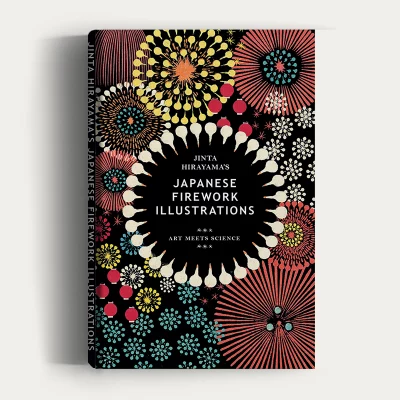 Art/Chemistry/Illustration/Japanese Woodblock/Pyrotechnics/ScienceSelect options This product has multiple variants. The options may be chosen on the product page
Art/Chemistry/Illustration/Japanese Woodblock/Pyrotechnics/ScienceSelect options This product has multiple variants. The options may be chosen on the product pageJinta Hirayama’s Japanese Firework Illustrations
£6.99 – £24.99Price range: £6.99 through £24.99 -
 Nature/Botany/Illustration/Mushrooms/MycologySelect options This product has multiple variants. The options may be chosen on the product page
Nature/Botany/Illustration/Mushrooms/MycologySelect options This product has multiple variants. The options may be chosen on the product pageAnna Maria Hussey’s Mushroom Illustrations
£7.99 – £29.99Price range: £7.99 through £29.99 -
 Art/Color TheorySelect options This product has multiple variants. The options may be chosen on the product page
Art/Color TheorySelect options This product has multiple variants. The options may be chosen on the product pageMunsell’s Colour System
£7.99 – £25.99Price range: £7.99 through £25.99 -
 Art/Astronomy/ScienceSelect options This product has multiple variants. The options may be chosen on the product page
Art/Astronomy/ScienceSelect options This product has multiple variants. The options may be chosen on the product pageUrania’s Star Charts
£7.99 – £29.99Price range: £7.99 through £29.99 -
 Art/Color TheorySelect options This product has multiple variants. The options may be chosen on the product page
Art/Color TheorySelect options This product has multiple variants. The options may be chosen on the product pageEmily Vanderpoel’s Color Problems
£7.99 – £34.99Price range: £7.99 through £34.99 -
 Animals/Butterflies & Moths/NatureSelect options This product has multiple variants. The options may be chosen on the product page
Animals/Butterflies & Moths/NatureSelect options This product has multiple variants. The options may be chosen on the product pageMaria Sibylla Merian’s Metamorphosis
£9.99 – £34.99Price range: £9.99 through £34.99 -
 Human Anatomy & Physiology/Life Sciences/ScienceSelect options This product has multiple variants. The options may be chosen on the product page
Human Anatomy & Physiology/Life Sciences/ScienceSelect options This product has multiple variants. The options may be chosen on the product pageHenry Gray’s Anatomy
£9.99 – £39.99Price range: £9.99 through £39.99 -
 Artists' Books/Individual Photographers/PhotographySelect options This product has multiple variants. The options may be chosen on the product page
Artists' Books/Individual Photographers/PhotographySelect options This product has multiple variants. The options may be chosen on the product pageAnna Atkins’ Cyanotypes of British and Foreign Ferns
£9.99 – £24.99Price range: £9.99 through £24.99 -
 Life Sciences/Marine Biology/ScienceSelect options This product has multiple variants. The options may be chosen on the product page
Life Sciences/Marine Biology/ScienceSelect options This product has multiple variants. The options may be chosen on the product pageErnst Haeckel’s Art Forms in Nature
£9.99 – £28.99Price range: £9.99 through £28.99




